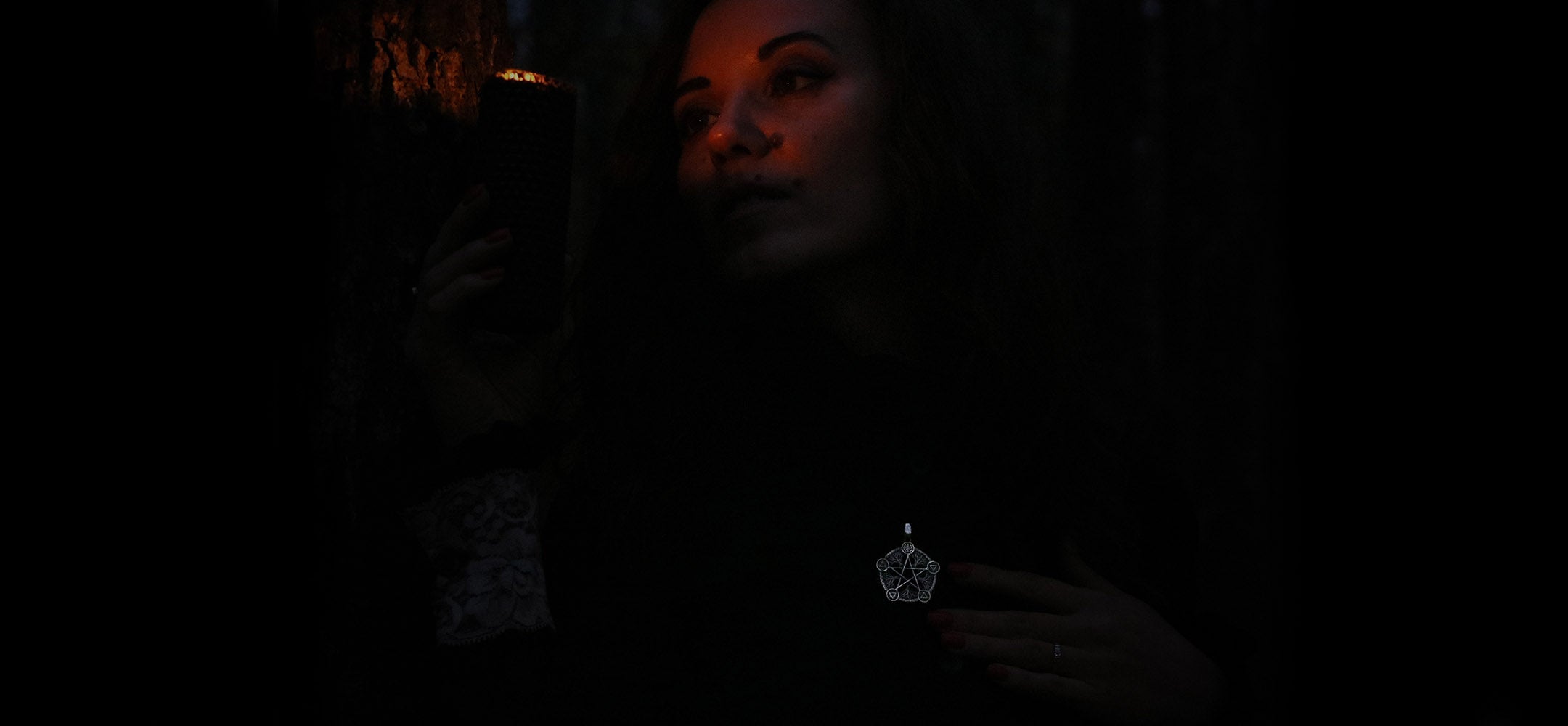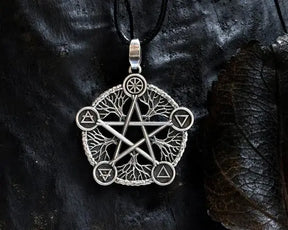The Dumb Supper is a deeply spiritual and solemn ritual traditionally held during Samhain, a time when the veil between the world of the living and the dead is believed to be at its thinnest. The word "dumb" in this context refers to the act of silence, which is a central element of the ritual. Participants honor and invite the spirits of deceased loved ones, ancestors, or other spirits to join them at the table, sharing a meal in quiet reflection. The Dumb Supper serves as both a means of remembrance and a way to communicate with the spirits of the dead.
Origins and Historical Context
The origins of the Dumb Supper are rooted in ancient Celtic and pagan traditions, particularly those surrounding Samhain. As Samhain marks the end of the harvest and the beginning of the dark half of the year, it was seen as a time of transition, where the boundaries between life and death were blurred. During this period, it was believed that spirits could cross over into the world of the living. The Dumb Supper developed as a way to honor these spirits, inviting them to partake in a final meal before they returned to the Otherworld.
The tradition of offering food to the dead is ancient and cross-cultural. In many pagan cultures, leaving food for ancestors or spirits was a common practice during festivals and funerary rites. The Dumb Supper became a more formalized way of making offerings and acknowledging the presence of the dead, combining elements of ritual, respect, and communion with the spirit world.
Purpose of the Dumb Supper
The primary purpose of the Dumb Supper is to communicate with and honor the dead. It provides an opportunity to connect with loved ones who have passed away, offer them a place at the table, and pay homage to their memory. The silence observed during the meal is intended to create a sacred and reflective space where participants can feel the presence of the spirits and perhaps receive messages or signs from them.
In addition to honoring the dead, the Dumb Supper can also be used as a way to reflect on the cycles of life, death, and rebirth. It is a time to contemplate mortality, the passage of time, and the continuation of life through memories and ancestral connections. The supper also serves as a form of closure for those grieving a recent loss, offering a space to process grief and commune with the departed in a peaceful and sacred manner.
The Ritual Structure of the Dumb Supper
-
Preparation: The preparation for a Dumb Supper is a highly symbolic and intentional process. Participants usually set up a special table or altar, often adorned with photos or mementos of deceased loved ones, candles, and offerings. The atmosphere is made somber and quiet, with dim lighting and perhaps incense to create a space conducive to reflection and spiritual connection. The table is typically set with an extra place for the deceased, acknowledging their presence as honored guests at the meal.
-
Reversed Table Setting: In some traditions, the table is set in reverse order, with utensils and plates placed backward or upside down. This symbolizes the turning of the natural order as the world enters the darker half of the year and also serves as an invitation for the dead to join in the meal.
-
Black and White Colors: The colors black and white are often used to represent the balance between life and death. Black symbolizes death, mystery, and the unknown, while white represents purity, spirit, and the continuation of life after death. These colors may be reflected in the tablecloth, candles, or even the food served.
-
-
Inviting the Dead: Before the meal begins, participants perform a ritual to invite the spirits of their ancestors or deceased loved ones to join them. This may involve lighting candles, reciting prayers or invocations, or simply speaking their names aloud. Some traditions also include specific gestures, such as opening a door or window, to symbolically allow the spirits to enter the space.
The invited spirits are often guided to their seats at the table, which may be left empty or set with a plate of food. In some traditions, a portion of the meal is served to the spirits as an offering, acknowledging their presence and the connection between the living and the dead.
-
The Silent Meal: The core of the Dumb Supper is the shared meal, which is eaten in complete silence. This silence is not just a formality but a way of deepening the participants’ awareness of the spirits’ presence. The lack of verbal communication allows for a heightened sense of introspection and spiritual connection, making space for participants to reflect on their relationships with the dead and perhaps receive messages or guidance.
-
Reflection and Contemplation: During the meal, participants may silently reflect on memories of their loved ones, express gratitude for their lives, or seek answers to personal questions. Some believe that the spirits communicate more clearly in the quiet, and that one might receive signs, intuitive feelings, or visions during the meal.
-
Serving in Reverse Order: In some traditions, the meal is served in reverse order, starting with dessert and ending with the appetizer. This mirrors the reversed nature of the ritual, where normal life is temporarily suspended to connect with the world of the dead.
-
-
Offerings and Food Choices: The food served at a Dumb Supper often carries symbolic meaning and reflects the final harvest of the season. Common foods include fruits, vegetables, grains, and nuts, all of which are connected to the earth and its cycles. Some families or groups prepare the favorite foods of their deceased loved ones as a way of honoring their memory.
- Sacred Offerings: A portion of the meal is set aside as an offering for the dead. This food might be placed at the head of the table, left at an altar, or, in some cases, taken outside after the meal and buried or burned. This offering represents the participants’ gratitude and their acknowledgment of the ongoing presence of the dead in their lives.
-
Closing the Ritual: After the meal is finished, the ritual is closed by thanking the spirits for their presence and bidding them farewell. Candles may be extinguished, and any remaining food offerings may be disposed of in a ritualistic manner, such as burying them in the ground or offering them to nature. The participants may also say prayers or words of release, ensuring that the spirits can return peacefully to the Otherworld.
- Closing the Veil: Symbolic actions such as closing windows or doors are sometimes performed to signify the closing of the veil between worlds. This ensures that the connection with the spirit world is respectfully ended, and the living are protected from any lingering energies.
Modern Interpretations of the Dumb Supper
While the Dumb Supper has its roots in ancient traditions, it has also evolved and adapted to modern pagan practices. Today, many Wiccans, pagans, and those who follow other earth-based spiritual paths incorporate the Dumb Supper into their Samhain celebrations as a way of honoring ancestors and reflecting on the themes of death and rebirth.
Modern Dumb Suppers may be more informal or personalized than the traditional rituals, but they still retain the core elements of silence, remembrance, and connection with the dead. Some may incorporate additional spiritual practices, such as tarot readings, meditation, or scrying, to enhance their communication with the spirit world. Others may invite a broader range of spirits, including deceased pets, guides, or those who died in tragedies.
Spiritual and Emotional Significance
For many people, the Dumb Supper is not only a way to honor ancestors but also a healing practice. It offers an opportunity for those who are grieving to connect with their loved ones in a meaningful way. The silence and ritual create a sacred space for reflection, where participants can express their love, sorrow, or even unresolved emotions, all in a quiet and respectful setting.
It also serves as a reminder of the cycles of life, death, and renewal, providing a sense of closure and peace for both the living and the dead. By honoring the dead and recognizing their ongoing presence in our lives, the Dumb Supper helps create a bridge between worlds, reaffirming the interconnectedness of all beings across time and space.





